Comment: In light of readers' feedback regarding the following article, a few comments:
The 'science' in this article isn't really defensible. It's the 'newsworthiness' of the story that stands out for SOTT.net, just the fact that ANY kind of space threat scenario is being publicized.
A couple of possibilities as to what is going on here:
The author is 'leaking info' which, though not scientifically accurate, gets that message out there that 'something wicked this way comes'.
Alternatively, the author is writing deliberately rubbish stuff that can easily be debunked, thereby debunking anyone by association who notices that something is definitely 'up'.
Maybe a bit of both is at work; maybe something else entirely. Journalistic standards aren't exactly what they might once have been, so this could simply have been a rush-job to meet the deadline for a 'sensational' story.
But consider this: while the UK's Daily Express is 'tabloid trash', it's also owned by a media baron, a British media baron, no less, who are notoriously good at 'info-crafting'. As such, most, if not all, of its content, like all MSM, is pretty carefully vetted. If you get to hear about something, then there's generally a political reason why you're getting to hear about it.
So, SOTT.net is re-posting this article - for posterity's sake if nothing else - to take note of the fact that a British media outlet has just alerted sizeable numbers of people to the reality of imminent cosmic threat, whether intentionally, as part of a 'tar-baby' maneuver, or otherwise.
The bottom line is that the planet today - in contrast with a decade ago - IS being peppered with more and more space rocks, and more and more people are starting to take notice.
The article itself may be 'noise' - and most, unaware of the extent of the space threat, would be correct to dismiss it - but we happen to know for a fact that there is a 'signal' behind it.
Asteroids could rain down on the earth for 100 years, shocked experts have just warned.
A previously unknown asteroid belt has been located in deep space and is now hurtling towards our part of the solar system.
It means a 'global killer' could collide with Earth as soon as 2020, wiping out life as we know it and changing the climate for millennia.
The terrifying predictions came as NASA revealed disturbing new data showing 400 impacts are expected between 2017 and 2113, based on new observational data of objects seen in space over the past 60 days.
Most will have a maximum diameter of around 100 metres - the size of seven double decker buses - and the potential to cause significant damage.
But concerned scientists warned a colossal "monster" is also heading our way, with one 'mega' asteroid threatening earth in just SIX years.
It follows claims this week by physicist Professor Brian Cox that a bus-sized asteroid, named 2014 EC, came within 61,637 kilometres (38,300 miles) of Earth in March.
He said there is an "asteroid with our name on it" and it is only a matter of time before an asteroid large enough to wipe out the human race collides with Earth.
Many believe an asteroid was responsible for killing the dinosaurs with a similar life-changing event potentially just around the corner.
Professor Bill Napier, an astronomy expert at the University of Buckingham, said a strike by either an asteroid or debris from a comet could have devastating consequences.
He said: "If something like this happened, depending on where it hit it would be absolutely life-altering.
"The atmospheric chemistry would be upset by cutting out sunlight. It would be like a nuclear winter and could last for tens of thousands of years.
"These comets are 200-300km (186 miles) in diameter they are sheer monsters and could sterilise the earth if we are hit by one.
"The more immediate risk comes from sub-kilometre (smaller) asteroids and there are tens of thousands of these in space which are quite capable of causing damage on a regional scale.
"One hit Siberia in 1908 and luckily it was not in a populated area. Had this happened in London it would have wiped out everything within the M25 and you would have heard the collision in another country."
And experts warned of the possibility of something much bigger striking earth in 2020.
Asteroid 2012 DA14, discovered by astronomers at the LaSagra Observatory in Spain, currently has less than a one per cent chance of hitting but scientists can't rule out the possibility that it might smash into our planet.
Paul Chodas, a planetary astronomer at NASA's Jet Propulsion Laboratory (JPL) said: "The orbit for 2012 DA14 is currently very Earth-like, which means it will be very close to Earth on a regular basis."
Professor Napier said the earth is at risk of two types of strike - asteroids, which are lumps of rock, and much larger comets formed from ice which shatter into billions of "diamond-like" pieces as they hit the earth.
He said though some famous comets like Halley's Comet present little risk there are similar ones out there which could have catastrophic effects.
The Swift-Tuttle Comet, discovered in by Lewis Swift on July 16, 1862, and by Horace Parnell Tuttle on July 19, 1862, is next due to rocket past the planet in the year 4479.
Professor Napier said: "Halley's Comet, which is about 10km across does not cross closely enough to the earth, the most dangerous one is the Swift-Tuttle Comet which is 27km across and passes very close to the Earth.
"There is a more immediate risk from the smaller asteroids.
"Comets are extremely fragile ice bodies and from time to time they get caught up in the gravity of the giant planets and are thrown inwards, this stress can cause them to disintegrate.
"The dust would cut out the sunlight and we would see multiple bombardments".
This is not unlikely at all, and if we are looking at small comets, they become a significant risk on time scales relative to civilisation and capable of collapsing civilisation.
"These things are floating around in the sky and there is a real hazard out there that hasn't been properly studied, and it could happen at any time.
"Needless to say there's a lot of controversy around the subject it could be tomorrow".
Professor Cox, 46, said when 2014 EC sideswiped the Earth a few months ago it came dangerously close to wiping us all out.
He said: "We didn't see it, we saw it on the way out, but if it had just been a bit further over it would have probably wiped us out. These things happen.
"The thing that bothers me about that is we do know how to do something about it.
"There is an asteroid with our name on it and it will hit us."
According to the JPL there are more than 100 "ring-like" structures on Earth which could have been caused by an impact.
A working group chaired by Dr. David Morrison at the NASA Ames Research Centre, estimates there are more than 2,000 asteroids larger than one kilometre (0.6 miles) across in space.
NASA says an impact by one of these "in the wrong place" would be a catastrophe, but it would not threaten civilisation.
The working group warned an impact by an asteroid larger than 1-2 kilometres could throw the climate into chaos triggering crop failure and loss of life.
An impact by an object larger than about five kilometres is damaging enough to cause mass extinctions, it said.
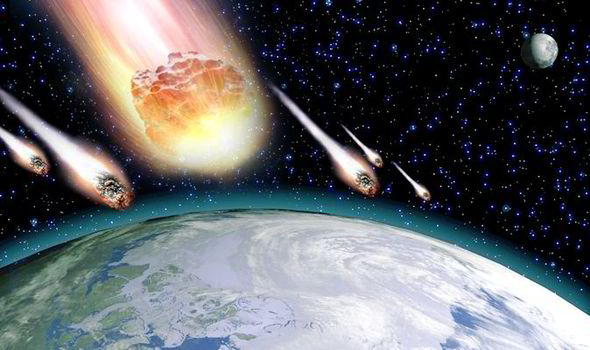
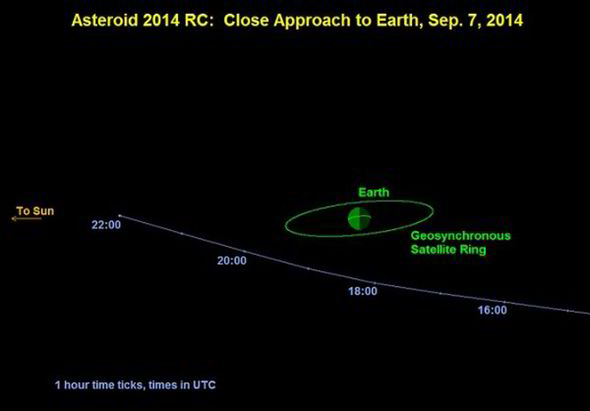
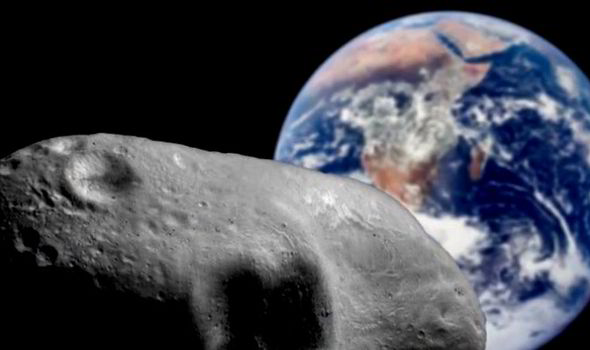
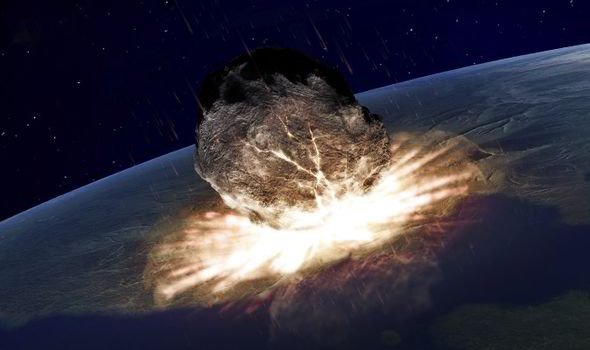
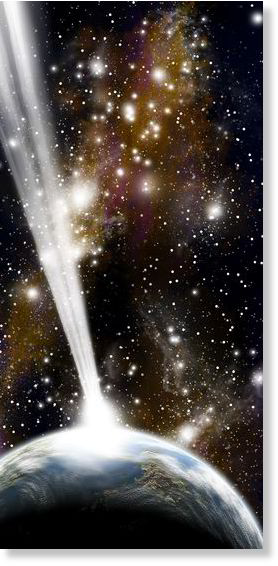
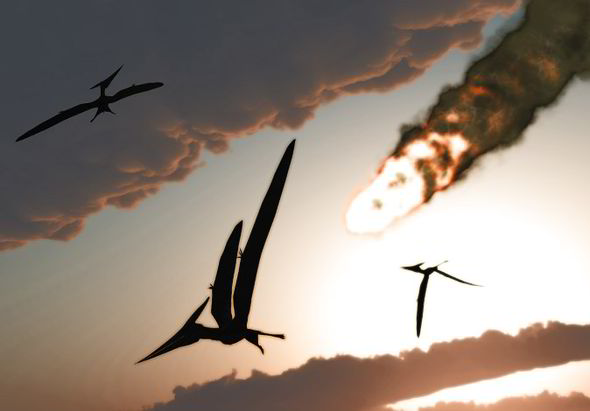



Will be government assistance. Just say no!